With fashion trends going and coming so briefly like yesterday morning’s breath, thrift vintage fashion reminds us of the reality that fashion need not be so much. A broad brush for pinching pennies, it has gained a global connotation of individuality, self-expression, and greenery.
In addition to the sustainable fashion 2025 trends, second-hand and vintage fashion has been re-focused on that has re-wired our relationship with fashion. Rather than buying each “new drop” from the fast-fashion monsters, the new ethical shopper is buying in the other direction — towards clothes with heritage, depth, and character.
Thrift vintage fashion style is not so much about dressing differently and more about thinking different. It’s a cultural shift towards embracing individuality, ecologic conscience, and circular economy — all of the above, which mass fashion needs to shift toward.
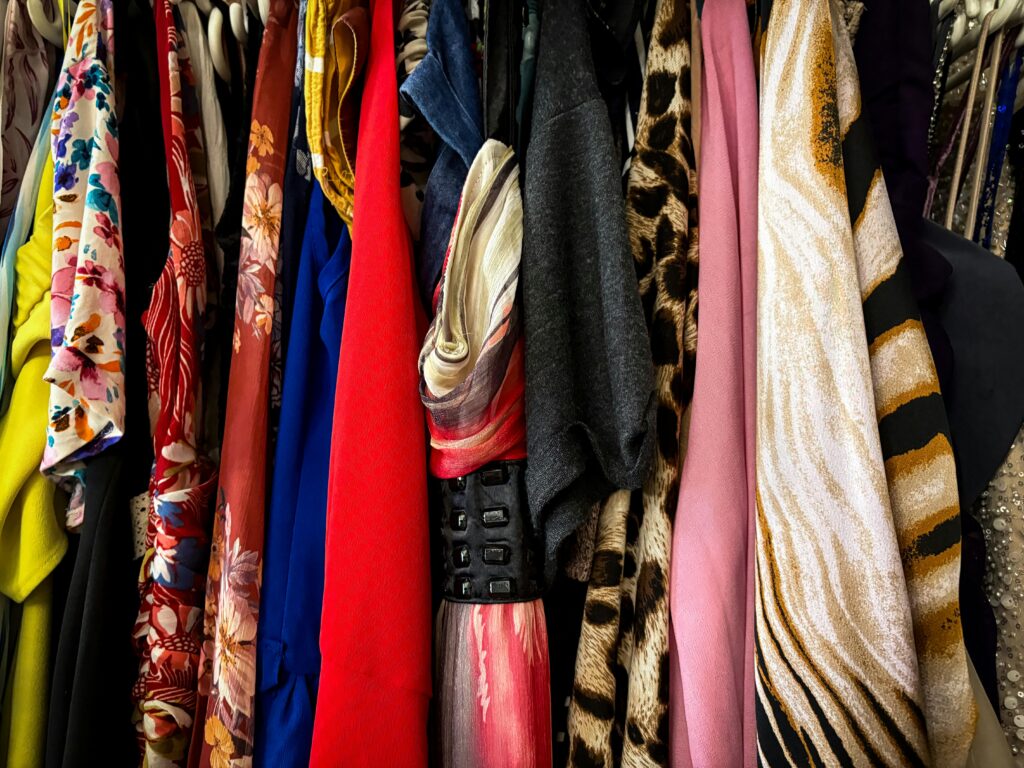
The Evolution of Thrift Vintage Fashion
Fashion, for one, is a trend. It returns in waves in retro form — a 90s cargo, a 70s hippie, an early 2000s jean. What’s new about 2025, however, is the attitude that accompanies it.
No longer are individuals dolling up in vintage for vanity’s sake alone — they are dressing up to be in a place to be heard. The cost of fast fashion on someone else’s terms has put consumers in the place of knowing that all commodities purchased have a price tag. Thrift style enables them to be fashionable and conscientious.
Where they were “second-hand” or “used” before, thrift stores are now culture centers. From shimmily filled-up internet chat sites to trendy vintage bazaars, these centers now pop with creativity and sustainability. Every item that a shopper purchases in a thrift store is a story — of the number of people who have already worn it before, and how it’s being given new use now.
Gen Z: The Heartbeat of the Thrift Revolution
If any generation is credited for making thrifting mainstream, it would be Gen Z. Gen Z grew up online and have been exposed to overproduction, waste, and destruction of the environment since day one — and they’re not going quietly into that good night.
For Gen Z uniqueness, fashion, second-hand and vintage stores exist. The fast-fashion equivalent is cosmic frugality and faceless. Gen Z shoppers like that thrifting makes them unique — not two of a kind, second-hand — and affordable.
Social media is leading this revolution too. TikTok “Thrift Haul” videos rack up millions of views. Influencers extol the virtues of pro thrift hacks — turning a poorly fitting t-shirt into a two-piece, or turning around a frayed coat into a style icon.
Thrifting is not just a hobby anymore; it’s a social movement that’s as fashionable as it is eco-friendly. That’s the Gen Z mantra: Buy less. Buy quality. Keep it going.
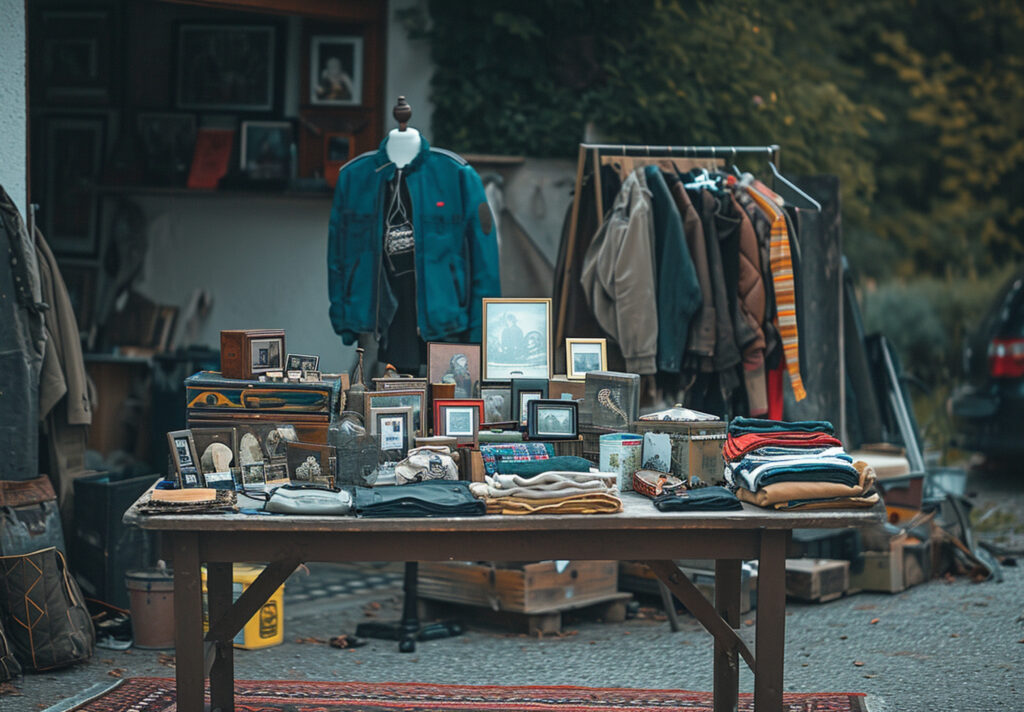
Fast Fashion and Vintage Thrift Fashion: A Humane Comparison
It’s Trendier than ever to be a part of the fast-fashion movement. Big-box stores receive fresh shipments of product weekly, which compels buyers to purchase more and less. The process incurs low wages, mass production, and goliath-sized wastage, unfortunately.
Based on ecological research, the rapid fashion industry generates more than 90 million tons of waste every year and contributes an equal carbon footprint that is accountable for nearly 10% of world emissions. Contaminating water bodies, deforestation, and water loss are just a few of the ecological damages caused by rapid fashion — thus, one of the most destructive industries in the world.
Thrift vintage fashion, on the other hand, promotes a circular economy. Unlike throwing away clothes, people are fixing, selling, and redefining. Every trip to a thrift is minimizing wastage, conserving resources, and limitless need for manufacturing less.
The thrifting ethic is in its ideologies — creativity, imagination, and responsibility. It’s green fashion.
Thrift Vintage Fashion in Sustainable Fashion Trends 2025
2025 is the year style. Sustainability isn’t optional anymore — tomorrow will be constructed with it. Thrift vintage is the natural solution to bring in sustainable fashion style in 2025 via circular design, stewardship consumption, and timelessness.
Major brands are beginning to acknowledge this shift. Platforms like Levi’s Second Hand and Gucci Vault are offering authenticated pre-owned collections. Fashion giants are collaborating with resale platforms like Vestiaire Collective and The RealReal. Even luxury fashion houses are now treating second-hand as first-class fashion.
Why? Human beings want meaning. They’re sick of see-it-once-and-tear-it-up. Thrifting adds meaning — everything has history, sweat equity, and personality. It’s green with a clear conscience.
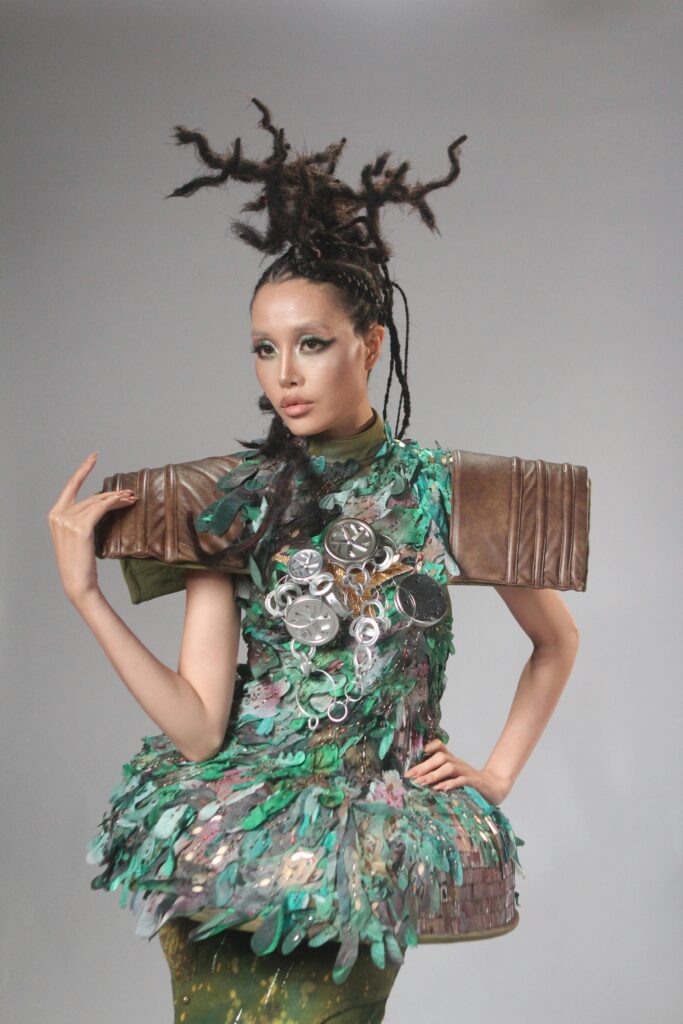
The Environmental Argument for Thrifting
The impact that fast fashion has on the environment is only now properly quantified in recent decades. It takes more than 2,700 liters of water to produce one cotton T-shirt — three years’ drinking water for one person. Microplastic pollution, chemical effluent run-off from dyes, and abandoned products after short-term usage follows, with industry cost being abhorrent.
And along the way, thrifting is the easiest way to whittle that footprint down. Recycling worn-out clothing prevents new clothing from having to be created. More production equates to more energy consumed, more waste, and more raw material. Thrift shopping is not a style man-of-war battle cry — it’s a green revolution. On an individual level, however, to most consumers, it can be the power behind the future of fashion.
How to Achieve That Vintage Thrift Look
Building a thrift vintage closet takes imagination, not fancies, and patience. Here’s how to do it beautifully:
Define Your Style DNA
Choose the decades or fashion styles you adore — maybe 60s mod, 70s bohemian, 80s glamour, or 90s minimalist.
Start Locally
Shop local vintage bazaars, charity shops, or second-hand shops. Small independent shops are the sanctuary where to discover gems that high street fashion won’t.
Curate, Not Hoard
Thrift shopping is a balancing act of curation and not hoarding. Purchasing what will fit in your style and wardrobe because it is nearly free isn’t the reason.
Match vintage blazers with fashionable jeans or vintage skirts with fashionable tops. Crossover of eras is your fashion.
Take Good Care of Your Treasures
Hand wash, repair if torn, and roll them up tightly and well. Keeping your second-hand treasures in good condition keeps them usable in the long run.
Get Creative with DIY & Upcycling
Your imagination is your best asset. Dye, crop, or re-do pieces to make them a new face once again.
All your thrifted goodies aren’t just something you’re wearing — it’s something you’re wearing as history.
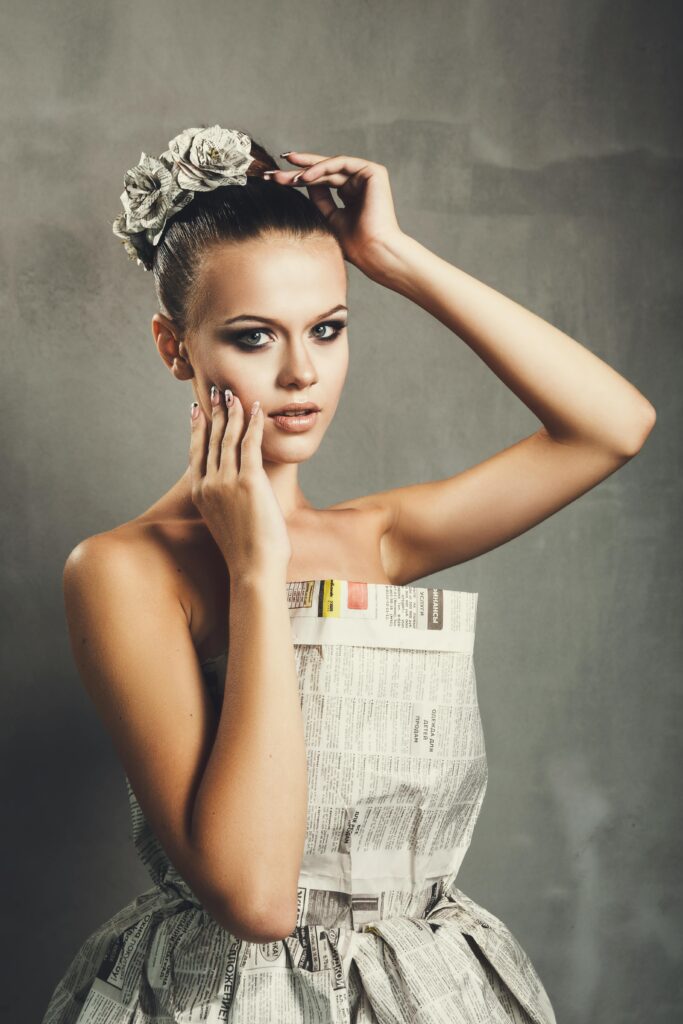
Social and Emotional Value of Second-hand Clothing
Last season’s second-hand is something money can’t buy — emotional value. To be second-hand is to experience the past in your present. Each garment has a story to it — and when you wear it, you are a part of the past.
Empowerment is not frugality. Empowerment turns beauty standards and brand names on their head. Fashion is not about cost. Anyone can look fashion, creative, and safe anywhere and everywhere at any moment in time.
Thrifting is also so beautifully democratic. Thrifting is a hunt, a treasure trove for the local economy, and democratizes style. It’s in a world so fixated on perfection that thrift fashion celebrates imperfection — frayed hem, frayed jeans, vintage print that won’t let go.
Challenges and Misconceptions of Thrift Vintage Fashion
With all emergent is their failure. Access is a problem — not everyone has good thrift stores or greener alternatives. Internet thrifting does fill in the gap somewhat but is plagued by such issues as emissions from shipping and lack of consistency in size.
The second myth is that second-hand is dirty or old. Second-hand and vintage shops sort and clean the merchandise well. Some even surpass new in quality, made to last centuries with tough material decades ago when processed material fast fashion wasn’t trendy yet.
Education is the answer. The more who are, the better is access, quality, and acceptability — retro thrift as world norm and not exception.
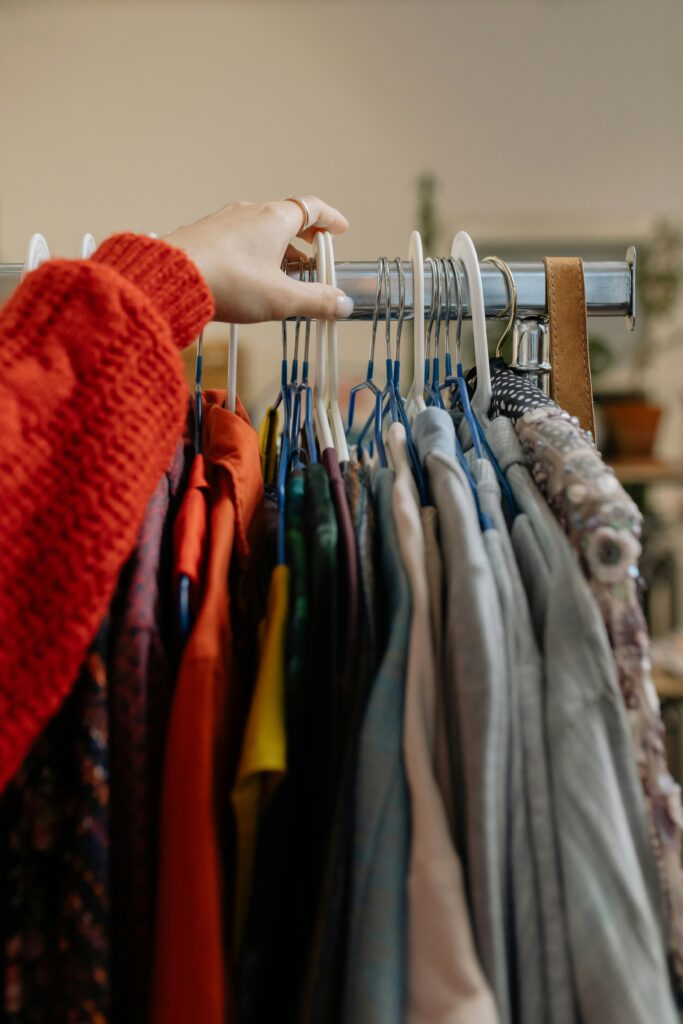
Thrift Vintage Style and Fashion’s Future
2025 Fashion has arrived at the door — sustainability is no longer a choice; it is a necessity. Thrift vintage style encapsulates this decade’s retro-reality mashup.
Find
Resale sites with AI offering thrift ratings for customers’ personal style.
Influencers
Influencers recycling retro as high-end goods.
Retro Luxury Fusions
Retro luxury fusions with fashion that blurs the distinction between new and old.
And finally, the future is green. The world’s most forward-thinking designers, businesses, and consumers will ensure it. And secondhand vintage fashion will be the beat of revolution — timeless, retro, and green.
Conclusion
Thrift vintage style isn’t about appearance — it’s about sustainability, ingenuity, and heritage. It’s where yesterday meets today and ethics and beauty meet.
In a world where the world can do either in fast fashion globally and individuality is on the line, thrifting is a resounding reminder that new is not always beautiful when it comes to fashion. With every second-hand jacket, vintage tote bag, or re-dressed gown, there is an evident choice — to respect the past in forging an enlightened future.
With sustainable fashion 2025 leading us to an ethical business, thrift vintage fashion is hope. Hope that fashion is also nice — to you, to all people, and to the planet.
Fashion will eventually be out of fashion, yet sustainability and truth are never out of fashion.
4 FAQs for This Topic (with 30-word answers)
1. What is thrift vintage fashion?
Thrift retro cool forges second-hand style nostalgia and ecocompatibility as a differentiation strategy, world salvation, and eternity fashion that won’t kill the planet.
2. Why is thrifting green?
Thrifting prevents clothes from ending up in landfills, saves water, and lowers carbon footprints by keeping clothes in circulation for longer and new resource-consumption clothes out of circulation.
3. Why does Gen Z love thrift fashion?
Gen Z loves sustainable, cheap, and authentic fashion. Thrifting is an authentic word that never tilts towards the darker side of fast fashion on the planet, the people, and the resources.
4. What are the 2025 trends in sustainable fashion?
They are circular fashion, second markets, online thrift platforms, and eco-friendly materials that combine creativity with nature awareness into a fashion-conscious but ethical wardrobe.








